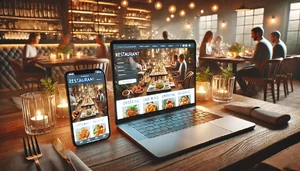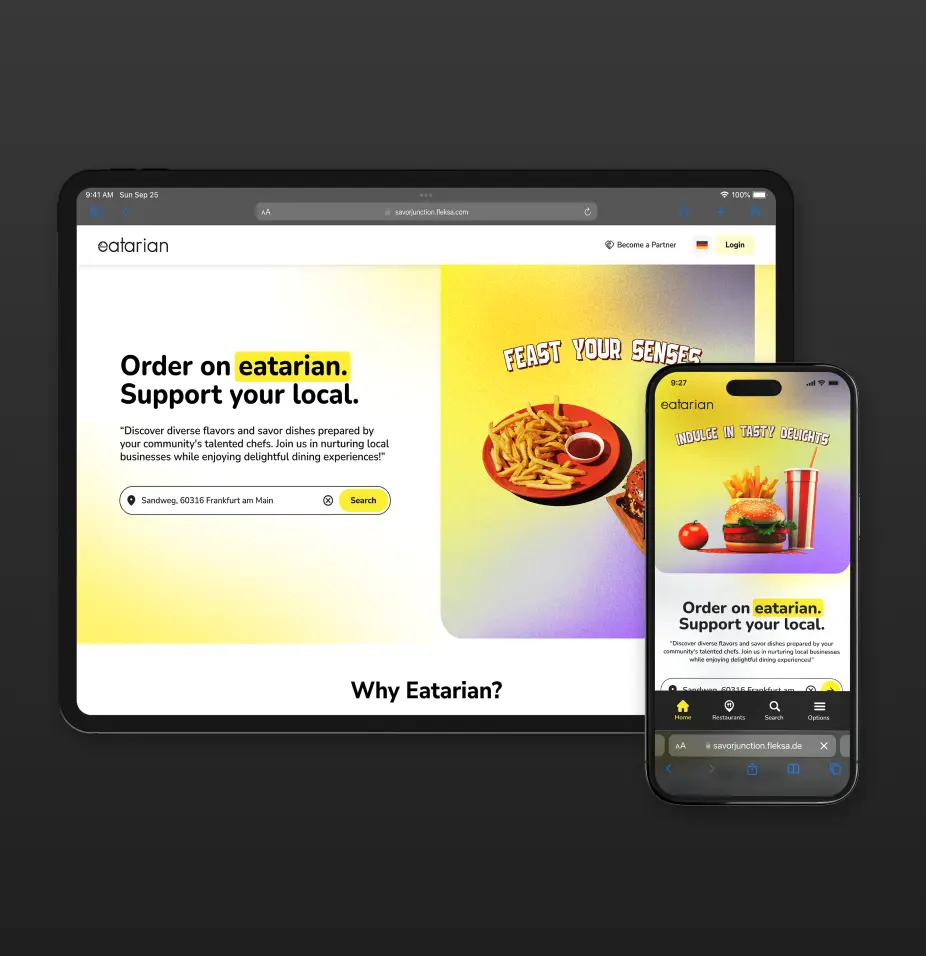The art of menu pricing in the restaurant industry is both a science and a strategy that can significantly impact a restaurant’s success. The prices listed on your menu are not arbitrary; they play a crucial role in the overall profitability of your restaurants. Whether you run a fine dining restaurant, a casual eatery, or a fast-food joint, understanding menu pricing strategies is essential for maximizing profits and customer satisfaction. In this blog, we’ll explore the importance of menu pricing and delve into common pricing models. We’ll also guide you through the process of determining your menu prices, and finally, we’ll unveil the 13 most effective restaurant menu pricing strategies with real-world examples to help you drive revenue and boost profits.
A Deep Dive into Menu Pricing Common Models
Before we get into the nitty-gritty of restaurant menu pricing strategies let’s establish a strong foundation by understanding the common pricing models used in the restaurant industry.
Cost-Plus Pricing Model
The cost-plus model is a straightforward approach where you calculate the cost of preparing a dish and add a markup percentage to determine the selling price. This is a common model for many restaurants, ensuring that you at least cover your costs and make a profit.
Competitive Pricing Model
In this model, you analyze your competitors’ prices and set your menu prices to be in line with or slightly lower than theirs. This can attract price-sensitive customers looking for a deal.
Value-Based Pricing Model
Value-based pricing involves setting your prices based on the perceived value of your dishes. If your restaurant is known for high-quality ingredients and exceptional service, you can charge premium prices.
Dynamic Pricing Model
Dynamic pricing is a flexible approach that allows you to adjust your menu prices based on factors like demand, time of day, or special occasions. It’s common for fine-dining establishments and can maximize profits during peak hours.
Psychological Pricing Model
This model leverages the psychology of pricing. For example, setting a dish at $9.99 instead of $10 can make it seem more affordable to customers.
Now that we’ve covered the common pricing models, let’s explore the strategies that will help you drive revenue.
How to Determine Your Menu Prices
Now that you’re familiar with common pricing models, it’s time to dig deeper into how to determine your menu prices. Here are the steps to help you establish the right pricing strategy for your restaurant:
- Calculate Your Costs: Start by thoroughly tracking all costs associated with your menu items, including ingredients, labor, rent, utilities, and other overhead expenses.
- Identify Your Profit Margin: Decide on the profit margin you want to achieve. This is the amount you want to make from each sale after covering all costs.
- Understand Your Market: Research your target market and analyze their price sensitivity. Are your customers willing to pay a premium for a unique dining experience, or are they looking for budget-friendly options?
- Consider Your Competitors: Study your competitors’ pricing strategies and ensure your prices are competitive while differentiating your offerings.
- Test and Adjust: Pricing is not static. Periodically review your pricing strategy and make adjustments based on customer feedback, sales data, and market changes.
Read more: The Ultimate Guide to Digital Menus for Restaurants
Revenue-Driven Restaurant Menu Pricing Strategies
Leverage Relative Pricing
Relative pricing involves strategically positioning menu items in relation to each other. By designating certain dishes as “best value” or “chef’s recommendation,” you can steer customers toward options with higher profit margins. This creates a perception of value and encourages customers to choose items that are more profitable for your restaurant.
Know About Your Operating Costs
To set optimal menu prices, it’s crucial to have a deep understanding of your operating costs. This includes factors like food costs, labor, rent, utilities, and more. By accounting for these costs, you can ensure that your menu prices not only cover expenses but also contribute to your desired profit margins.
Seasonal and Limited-Time Specials
Offering seasonal and limited-time specials can create a sense of urgency and excitement among customers. It’s an effective strategy to increase sales and attract repeat customers who look forward to new, unique menu items throughout the year.
Anchoring Pricing
Anchoring is a technique where you place a high-priced item beside a moderately priced one to make the latter appear more appealing. For instance, imagine featuring an opulent seafood platter at $99 alongside a humble lobster bisque at $14. This juxtaposition can lead diners to perceive the bisque as a great deal and opt for it, resulting in increased sales of the moderately priced item.
Bundle Pricing
Bundle pricing encourages customers to order more by offering packages that include multiple items at a discounted price. Imagine offering a “Family Feast” deal that comprises two entrees, a shared appetizer, and a dessert, all at a bundled price with a total saving of $20 compared to ordering them separately. This approach not only drives revenue but also enhances the overall dining experience by encouraging larger orders.
Early Bird and Late-Night Discounts
Early bird and late-night discounts are invaluable tools to optimize revenue during off-peak hours. These strategic promotions work by enticing customers to dine during these traditionally quieter times. By offering reduced prices during early hours and late evenings, you not only fill otherwise vacant tables but also broaden your customer base. Patrons looking for budget-friendly dining options or those with flexible schedules are more likely to take advantage of these specials, increasing overall sales and restaurant visibility.
Pricing Strategy Psychology
Leveraging the principles of pricing design psychology is a powerful strategy that allows you to mold customer choices. It involves clever techniques, such as pricing items at $9.99 or $19.95 to create the illusion of a lower cost, making them more appealing to consumers. Moreover, the use of visuals, fonts, and colors on your menu can significantly influence how customers perceive the value of the items you offer. A well-designed menu can entice diners and guide them toward choices that maximize your profits.
Happy Hour and Specials
During those slower periods of the day, happy hour and special promotions can be your restaurant’s saving grace. By offering discounted drinks and appetizers, you not only draw in patrons but also incentivize them to extend their stay and order full-priced meals. This dual-pronged approach not only increases revenue during off-peak hours but can also cultivate a loyal customer base.
Online Menu Optimization
In today’s digital age, optimizing your online menu is an absolute must. Your online menu mustn’t be just functional but also visually appealing and up-to-date in terms of pricing. Easy navigation and accurate pricing reassure potential customers, encouraging them to place orders. Furthermore, providing online ordering and delivery options caters to the growing segment of customers who prefer to dine in the comfort of their own homes, opening up new revenue streams and broadening your customer base.
Menu Management with POS Technology
Integrating Point of Sale (POS) technology into your restaurant’s operations is a modern solution for efficient menu management. The versatility of POS technology allows you to easily modify prices, add or remove items, and closely monitor sales data. This data-driven approach empowers you to make well-informed pricing decisions and streamline day-to-day operations, thus making a significant contribution to your restaurant’s profitability.
Storytelling Menu
A storytelling menu enhances the dining experience by sharing the history and preparation details of each dish. For instance, describing the journey of your house-made pasta, emphasizing artisanal techniques and locally sourced ingredients, not only justifies higher pricing but also forges a deeper connection with diners.
Pay-What-You-Want
Hosting a “Pay-What-You-Want” event for a select menu item, like a “Chef’s Surprise,” can create buzz and goodwill. Diners have the freedom to choose their own price, creating a unique and engaging dining experience while potentially increasing revenue through higher patronage and customer loyalty. Pay-What-You-Want pricing offers a novel and socially conscious approach to restaurant pricing. It can generate excitement and curiosity among customers, as they get to determine the value of their meal. This strategy not only enhances the dining experience by allowing guests to feel more involved but also strengthens the relationship between your restaurant and its patrons.
Dynamic Pricing
Dynamic pricing entails adjusting menu prices based on demand and the time of day. For instance, offering happy hour discounts on cocktails during off-peak hours, such as weekdays from 4 pm to 7 pm, can fill tables during slower times and maintain consistent revenue flow. This is a strategic method that responds to market conditions and customer behavior. By offering discounted prices during historically less busy hours, you can attract more diners during those times, ensuring a steady income throughout the day.
In conclusion, effective restaurant menu pricing strategies are a powerful tool for boosting restaurant profits. The right pricing approach can not only increase revenue but also enhance the overall dining experience. By understanding common pricing models, determining your menu prices, and implementing these 13 pricing strategies, you can set your restaurant on a path to success, catering to both your financial goals and customer satisfaction. Keep in mind that successful menu pricing is an ongoing process that requires periodic evaluation and adjustment to stay competitive in the ever-evolving restaurant industry.








